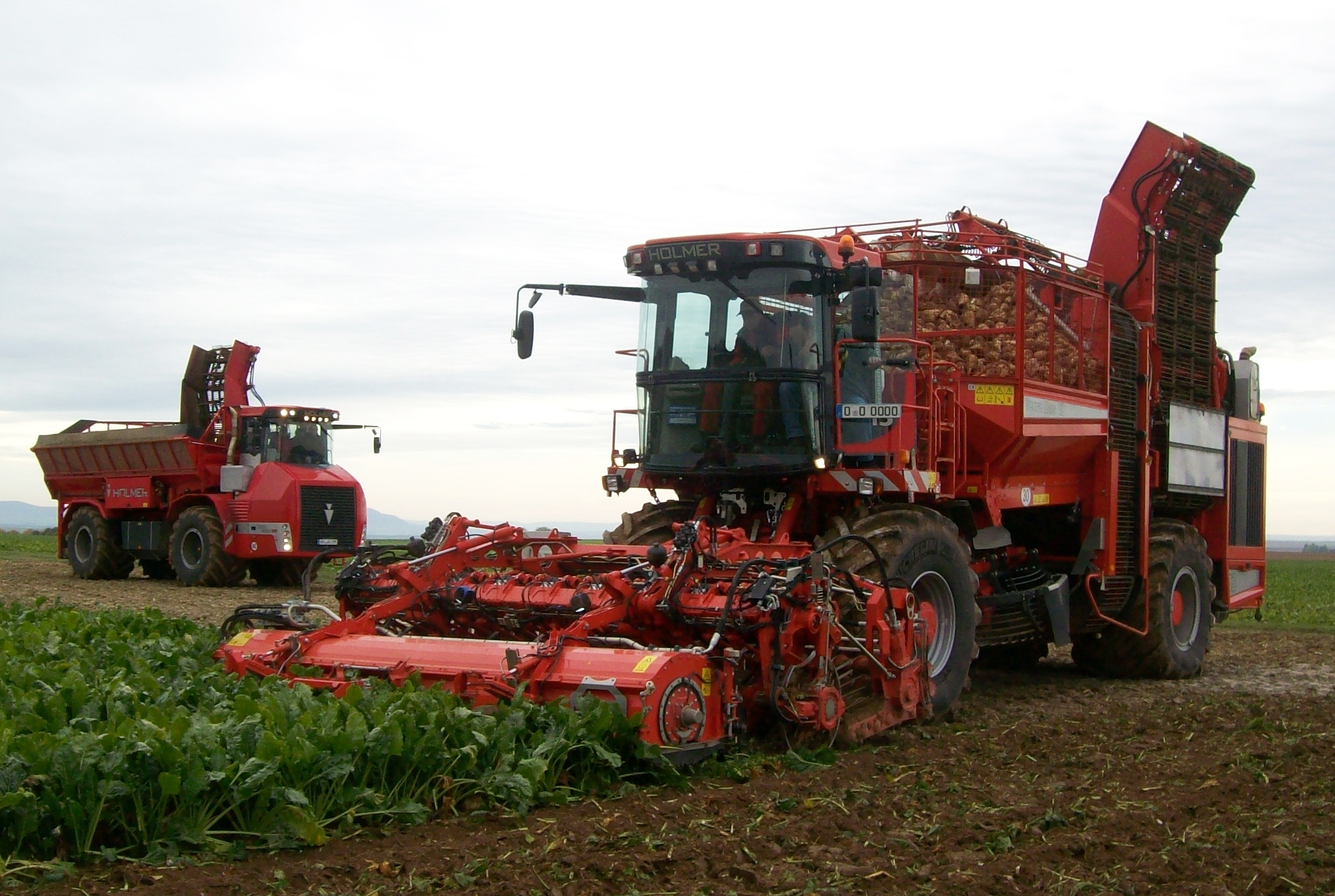Sugar Beet Harvester on:
[Wikipedia]
[Google]
[Amazon]
A Sugarbeet harvester is an agricultural machine for
(German) The first machines were pulled by a
 commons:category:Beet harvesters - Collection of pictures, videos and audio files
commons:category:Beet harvesters - Collection of pictures, videos and audio files
 commons:Gallery sugarbeet harvester - as further documentation (German)
commons:Gallery sugarbeet harvester - as further documentation (German)
ddr-landmaschinen.de - GDR sugarbeet harvester
''(Last retrieved on: 21.06.17)'' * ''(Last retrieved on: 21.06.17)'' * {{YouTube, id=CVr2qNElYu4, title=HOLMER EasyLift - automatische Einzelreihentiefenführung beim Roden Animation and section of the harvesting head.
Agricultural machinery
harvesting
Harvesting is the process of gathering a ripe crop from the fields. Reaping is the cutting of grain or pulse for harvest, typically using a scythe, sickle, or reaper. On smaller farms with minimal mechanization, harvesting is the most labor- ...
sugar beet
A sugar beet is a plant whose root contains a high concentration of sucrose and which is grown commercially for sugar production. In plant breeding, it is known as the Altissima cultivar group of the common beet (''Beta vulgaris''). Together wi ...
. It was invented by German farmer and agricultural engineer Otto Wilke in 1927. From 1936, series production then started first at Krupp
The Krupp family (see pronunciation), a prominent 400-year-old German dynasty from Essen, is notable for its production of steel, artillery, ammunition and other armaments. The family business, known as Friedrich Krupp AG (Friedrich Krup ...
, then later at Lanz (today John Deere
Deere & Company, doing business as John Deere (), is an American corporation that manufactures agricultural machinery, heavy equipment, forestry machinery, diesel engines, drivetrains (axles, transmissions, gearboxes) used in heavy equipment, ...
). From 1945 the ''Stoll Company'' took over beet harvester production after purchasing the patent rights.Rolf Ahlers: ''Otto Wilke, der Erfinder der Rübenvollerntemaschine'' (engl.: ''Otto Wilke, the inventor of the sugarbeet harvester''); in: ''Braunschweigische Heimat'' 98/2 (Hrsg.: Braunschweigischer Landesverein für Heimatschutz e.V.); Braunschweig: Appelhans Verlag, 201(German) The first machines were pulled by a
tractor
A tractor is an engineering vehicle specifically designed to deliver a high tractive effort (or torque) at slow speeds, for the purposes of hauling a trailer or machinery such as that used in agriculture, mining or construction. Most common ...
and only one row could be lifted. Modern self-propelled sugarbeet harvesters have predominantly 6-row harvesting units. The beets
The beetroot is the taproot portion of a beet plant, usually known in North America as beets while the vegetable is referred to as beetroot in British English, and also known as the table beet, garden beet, red beet, dinner beet or golden beet ...
are lifted from the ground by lifting shares. Through cleaning rollers, the transfer web and the discharge elevator, the beets are separated from the adhering soil and transported into the holding tank of the machine. The beets are placed on the edge of the field in storage clamps or overloaded on a transport vehicle during harvesting. The leaves of the beets are removed. They remain for fertilization in the field or can be used as animal food for cattle
Cattle (''Bos taurus'') are large, domesticated, cloven-hooved, herbivores. They are a prominent modern member of the subfamily Bovinae and the most widespread species of the genus ''Bos''. Adult females are referred to as cows and adult mal ...
, the leaves can be fed fresh or as silage
Silage () is a type of fodder made from green foliage crops which have been preserved by fermentation to the point of acidification. It can be fed to cattle, sheep and other such ruminants (cud-chewing animals). The fermentation and storage p ...
.
External links
ddr-landmaschinen.de - GDR sugarbeet harvester
''(Last retrieved on: 21.06.17)'' * ''(Last retrieved on: 21.06.17)'' * {{YouTube, id=CVr2qNElYu4, title=HOLMER EasyLift - automatische Einzelreihentiefenführung beim Roden Animation and section of the harvesting head.
References